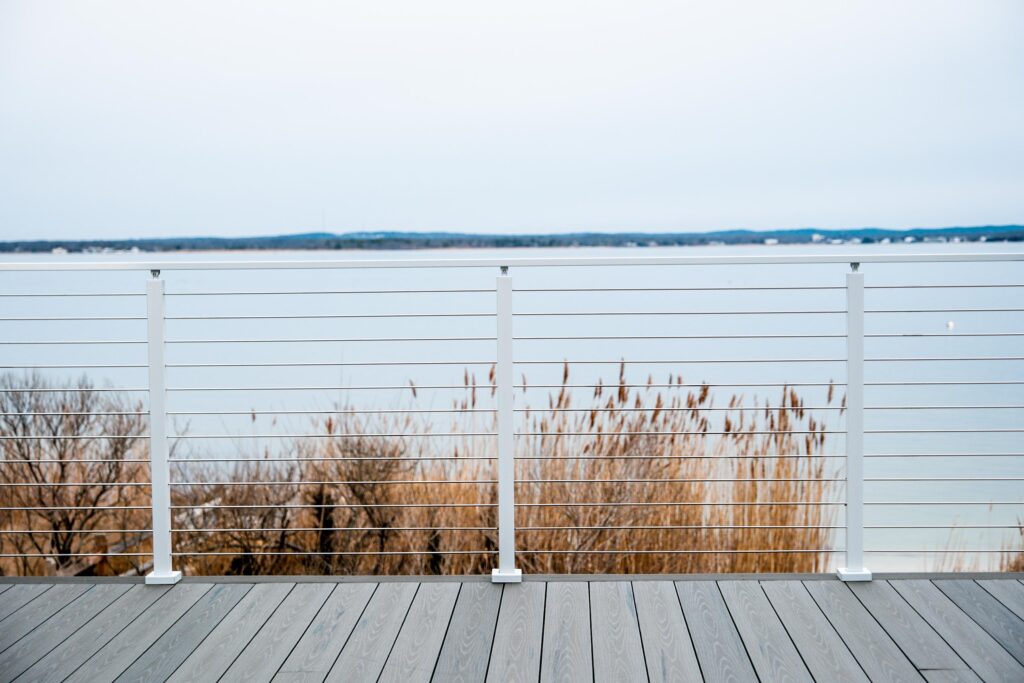
Sturdy construction, durable materials, and infill options are just a few of the reasons more and more people are opting to use cable railing on the coast.
If you’re new to cable railing systems, you might wonder how they work in harsh weather conditions and how to keep them in top condition. We’ve got the answers for you right here – but first, let’s take a look at the different materials that can be used in your railing system.
Post Materials
When it comes to the posts of your system, the best material to use on the coast is stainless steel. This durable metal is able to withstand harsh weather conditions and doesn’t require maintenance as frequently as other materials, such as aluminum or wood, which are more susceptible to corrosion, rust, and other issues that can affect the durability of your system.
Infill Options
Our cable wire, made from the same stainless steel material, is designed to withstand different weather environments. It can be installed both indoors and outdoors and holds the same level of safety and durability.
However, for especially harsh climates, or projects within 10 miles of salt water, we recommend upgrading your railing’s infill to Endurance rods. Endurance rod infill has the same, slim look as cable, but its smooth, stainless steel composition is designed to decrease the rigid surface area where moisture can collect and create rust.
Additionally, with its minimalist design, it’s the perfect choice for outdoor deck railing – so you can clearly see the natural surroundings.
How Do I Maintain my Cable Railing System?
It’s important to note that cable railing works both indoors and outdoors since it offers the same durability, safety, and style. That said, maintaining an outdoor system of any kind can require more time and effort than an indoor system.
Viewrail cable railing systems are designed to eliminate unnecessary maintenance, but there are still a few things to keep in mind.
Keep Up With Code Requirements
First and foremost, make sure your railing system has met all the code requirements in your area. These can change depending on where you live, so it’s important to know the regulations of cable railing before you install it.
Tensioning your cable wire every few months is one of the best ways to ensure your system is up to code.
(Related Article: Cable Railing Code & Safety)
Cleaning Materials
A simple wipe-off with a rag and a cleaning spray – such as our Marine 31 Polish – can help keep your system looking brand new all year round. Additionally, if there are a few tough spots you want to get rid of, you can use a small wire brush and hot soapy water.
Get Started With Your Cable Railing System
Durability, style, and limited maintenance are just a few of the major benefits of cable railing. As one of the most popular systems installed on or near the coast, we are dedicated to ensuring its longevity. Reach out to our team of professionals with any questions or concerns and we’ll help you in any way we can.